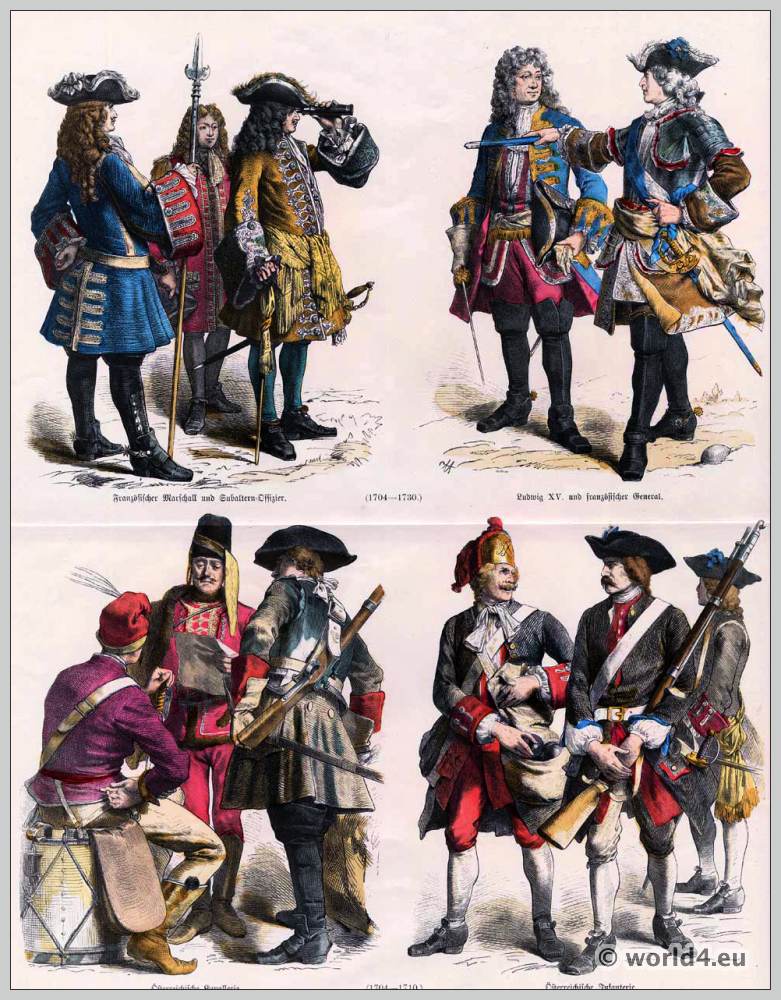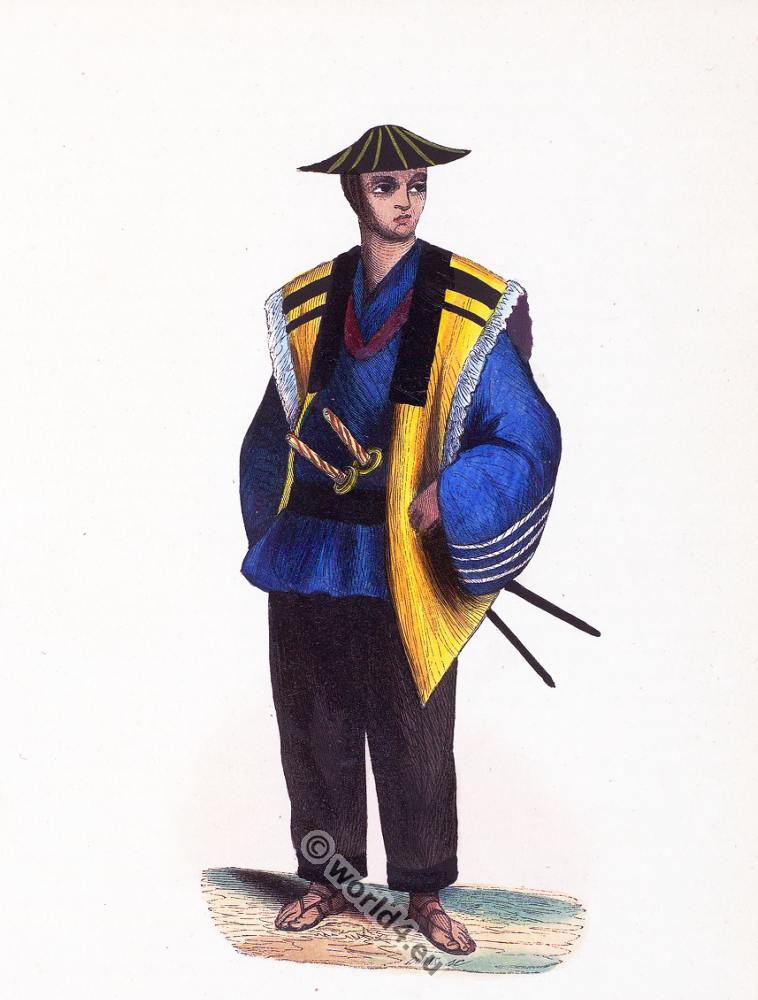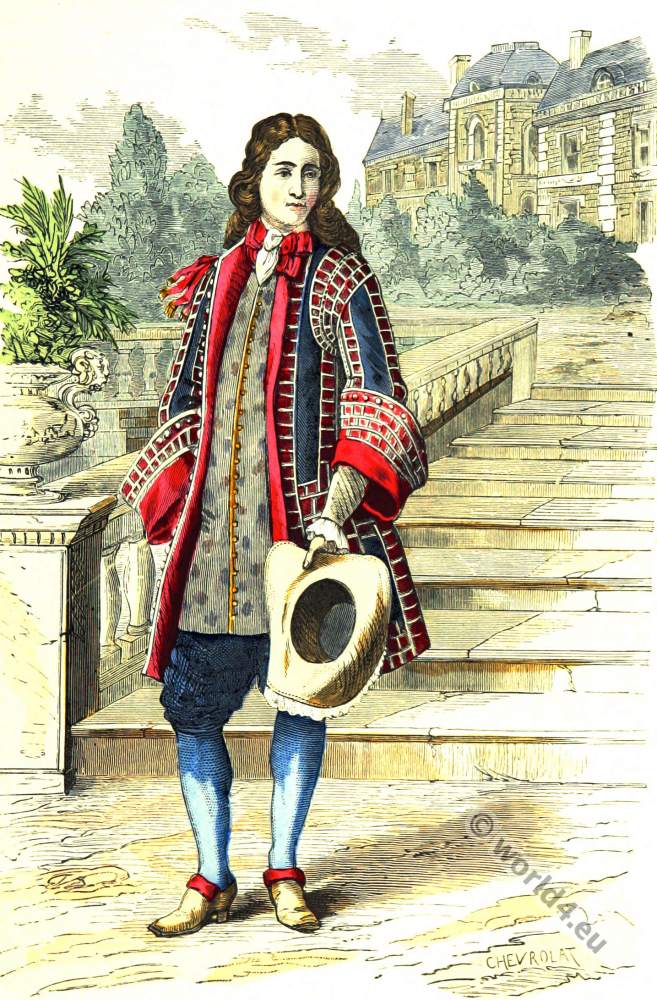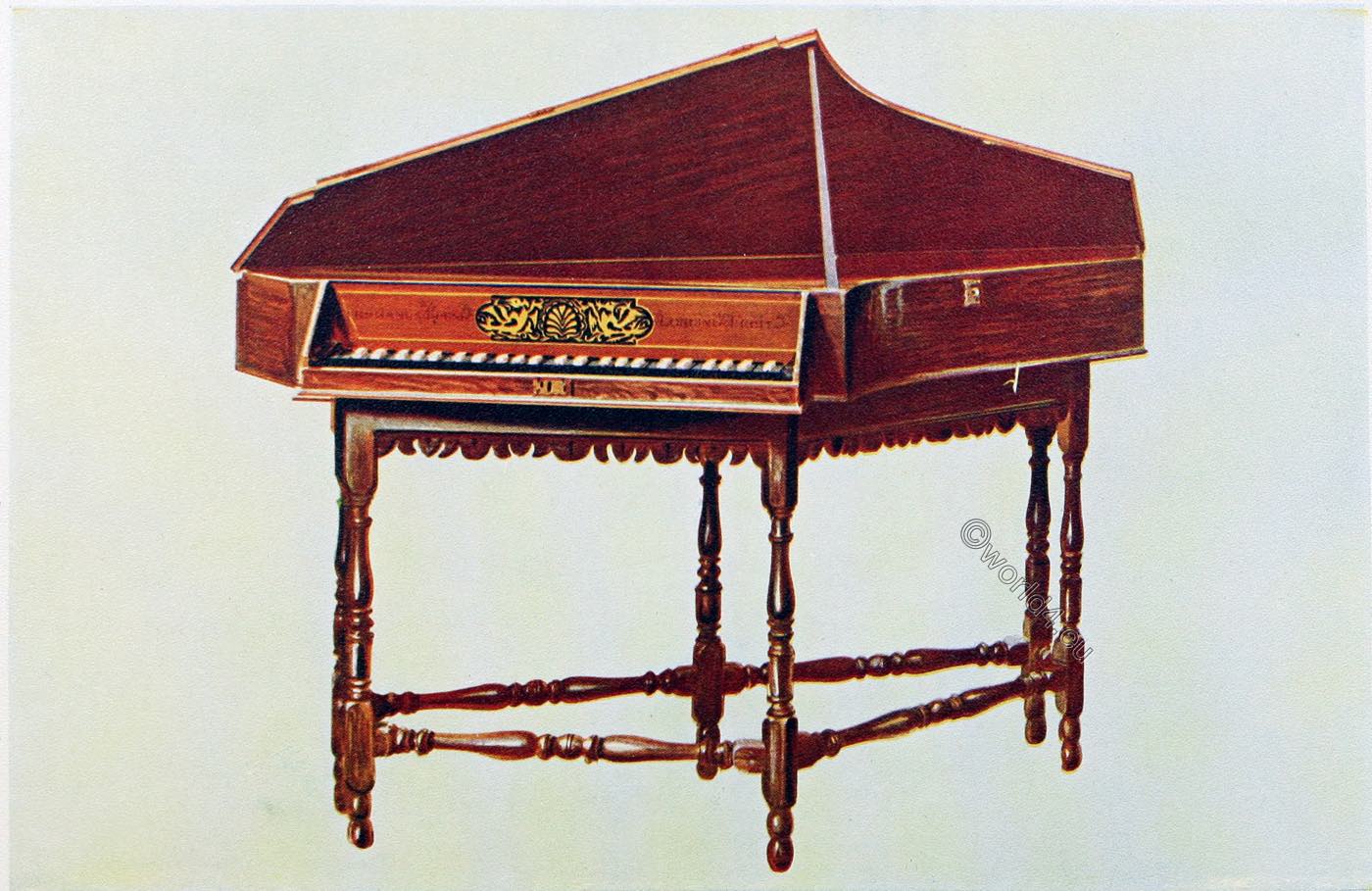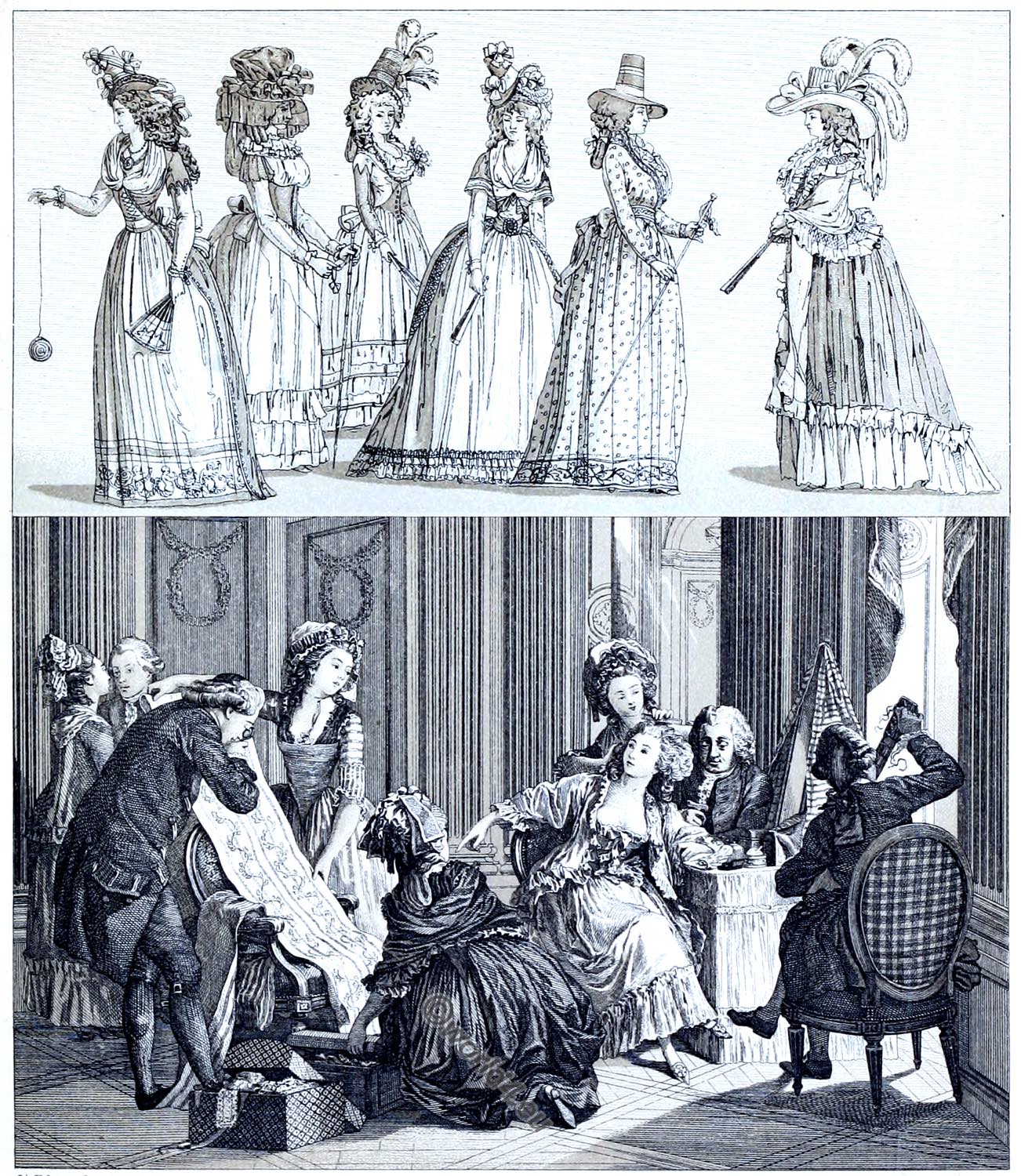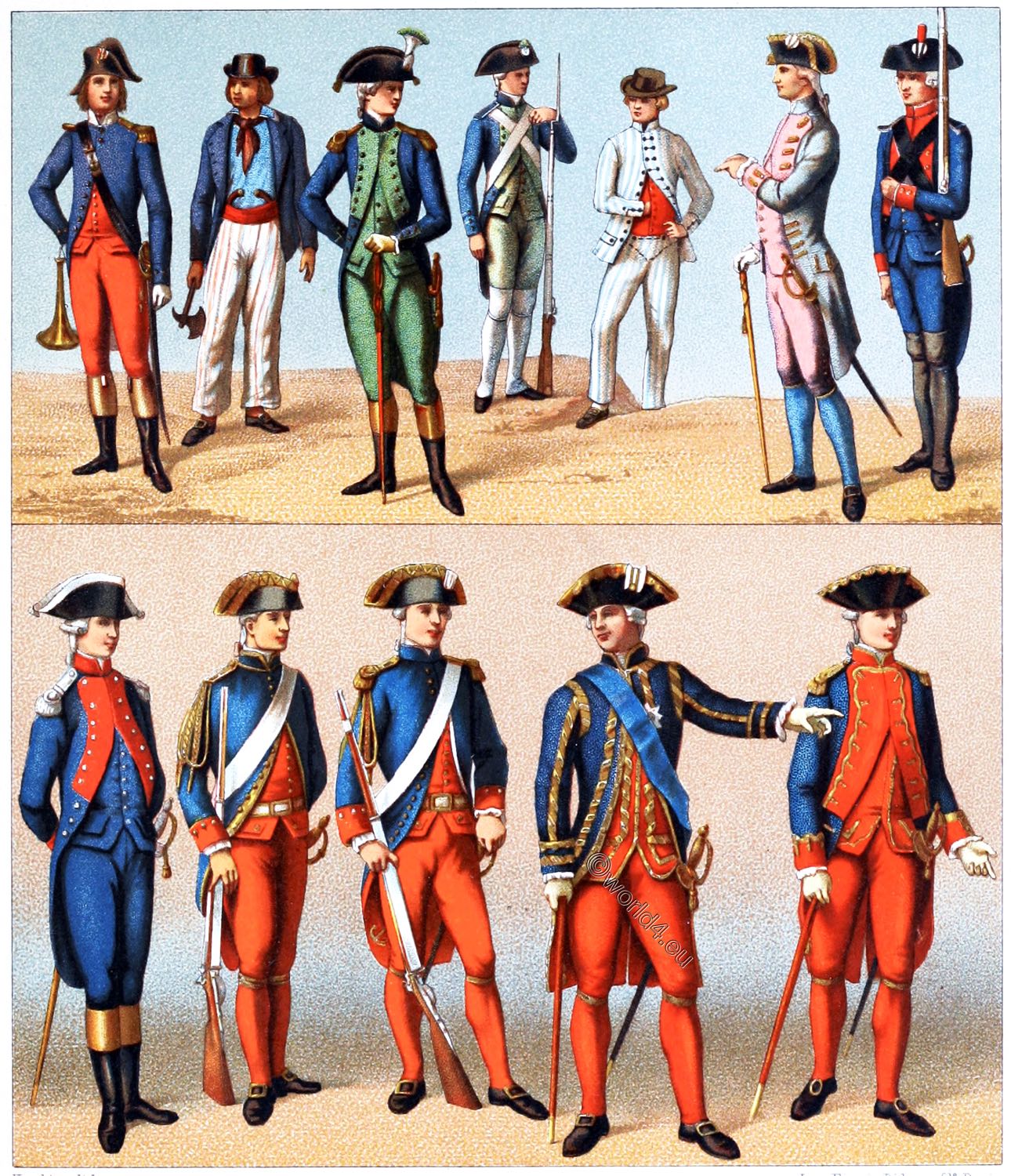
1, 2, 3, 4, 5, 6, 7,
8, 9, 10, 11, 12,
FRANCE XVIIITH CENTURY. UNIFORMS OF THE ROYAL NAVY; 1786.
THE NAVY DURING THE REPUBLIC; 1792.
Royal Navy, 1786.
Nos. 3, 4, 5, 6, 7, 8, 9, 10, 11 and 12.
Republican Navy, 1792.
Nos. 1 and 2.
The most glorious period of the French Navy, prepared by the Duke of Choiseul, falls under the government of Louis XVI. The revolution resulted in the emigration of the most able officers, the suppression of the naval schools and therefore the decline of the fleet.
No. 11. Admiral. Blue skirt, lining, vest, trousers and red stockings. Embroidery à la Bourgogne, i.e. gold gallooning on all seams; instead of epaulettes a braid of double width. The whole uniform resembles that of the Marshals of France.
No. 12. Vice Admiral. Scarlet lapels with copper-gilt anchor buttons and gold epaulettes. Until 1776 there were only two vice admirals. Later the number is unlimited.
No. 9 Guardsman of the Admiral’s Flag, The Guardsmen of the Admiral’s Flag, all noblemen, were formed under Louis XIV. One detachment was in Toulon, the other in Brest. They were in the admiral’s personal service and became naval officers if they were qualified. Royal blue skirt, lapels, lining, waistcoat, trousers and scarlet stockings; gold-plated copper buttons up to the belt, three on the lapels and three on each pocket; golden cords on the right shoulder; hat brim à la mousquetaire; white cockade.
No. 10. Naval Guard. The naval guardsmen, similarly uniformed like the guardsmen of the admiral’s flag, formed together with them since 1786 the first class of the naval levies or aspirants.
No. 5. Sailor. In 1786 the sailor wore a jacket of coarse wool fabric, the same trousers, reaching to the ankles, red waistcoat with small buttons and round waxed hat.
No. 3 and 4. coastguard; officer and commoner. The coast guards were formed by the inhabitants of the beach villages. They were divided into captains (coast guards) and since 1775 they were also used to operate the coastal batteries. The colour of their uniform was green. In 1793 they were disbanded.
No. 8 and 7. marines; officer and commoner; Brest regiment. The beginnings of the Marines date from 1772, when eight regiments, each with two battalions of nine companies, were established in Brest, Toulon, Rochefort, Marseilles, Bayonne, Saint-Malo, Bordeaux and Havre. The uniform of the Brest regiment was royal blue with red lapels. A small number of colonial troops had existed since 1695, but it was not until 1772 that nine regular regiments were established for this special service.
No. 6. Surgeon. The organization of a medical corps for shipboard service is not very old. There are no ship’s doctors in the naval budgets from 1661 to 1745.
No. 1 and 2 Naval Officer and Sailor; 1792. the reorganization of the navy, which was dissolved on April 22nd , 1791, was carried out on May 15th and completed by decree of March 18th , 1793, with strong involvement of the merchant navy. The officers’ uniforms did not undergo any significant changes in cut and colour. The main principle for the sailors’ suits was the greatest possible comfort. Blue shirt with a wide, turned-down collar, a wide jacket and blue-white-red striped trousers.
Figures according to the Costumes militaires français by de Noirmont and A. de Marbot. C.f. Guérin, Histoire maritime de la France. Du Sein, Histoire de la marine de tous les peuples, Paris 1863.
Source: History of the costume in chronological development by Auguste Racinet. Published by Adolf Rosenberg. Berlin 1888.

